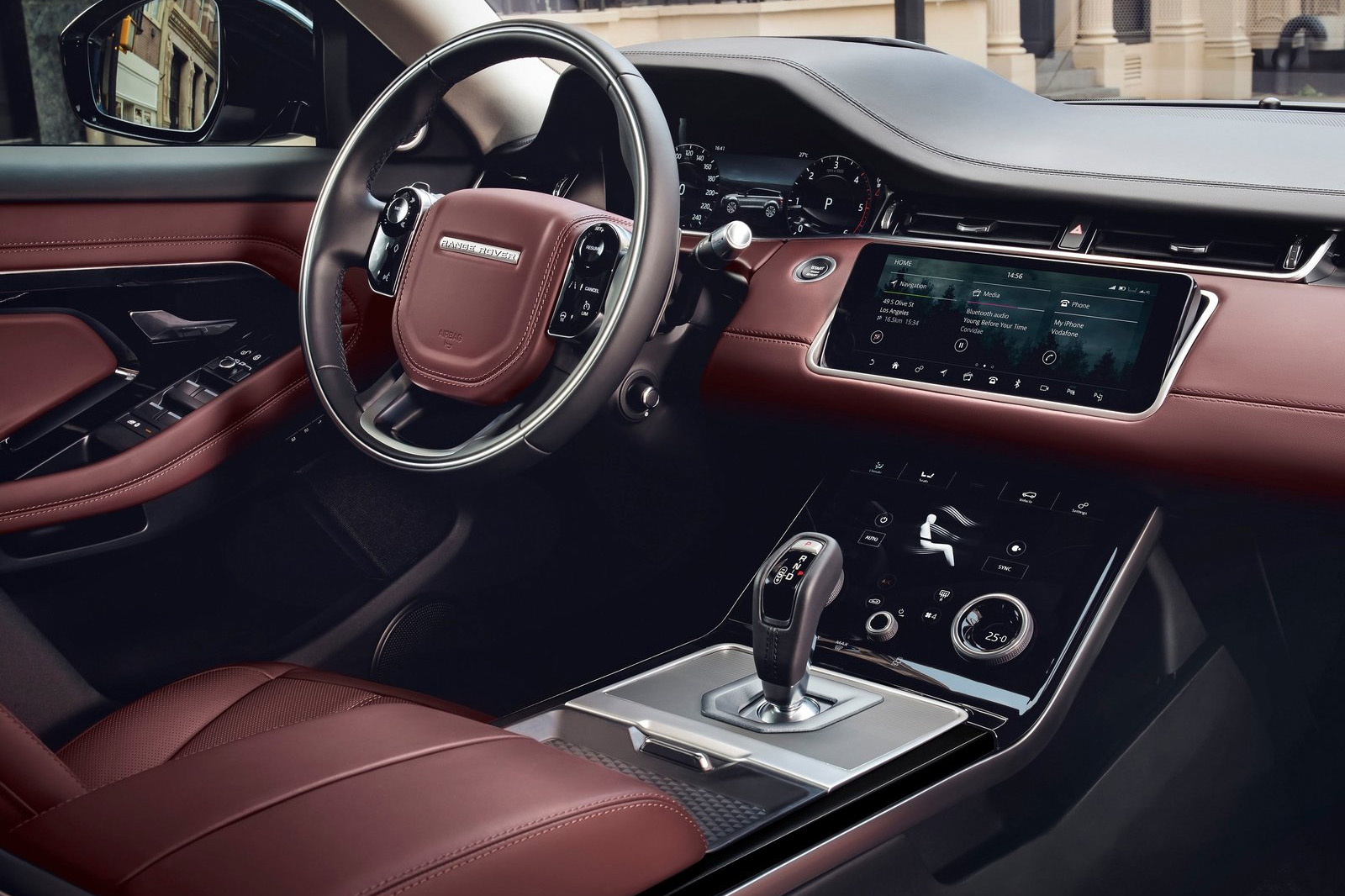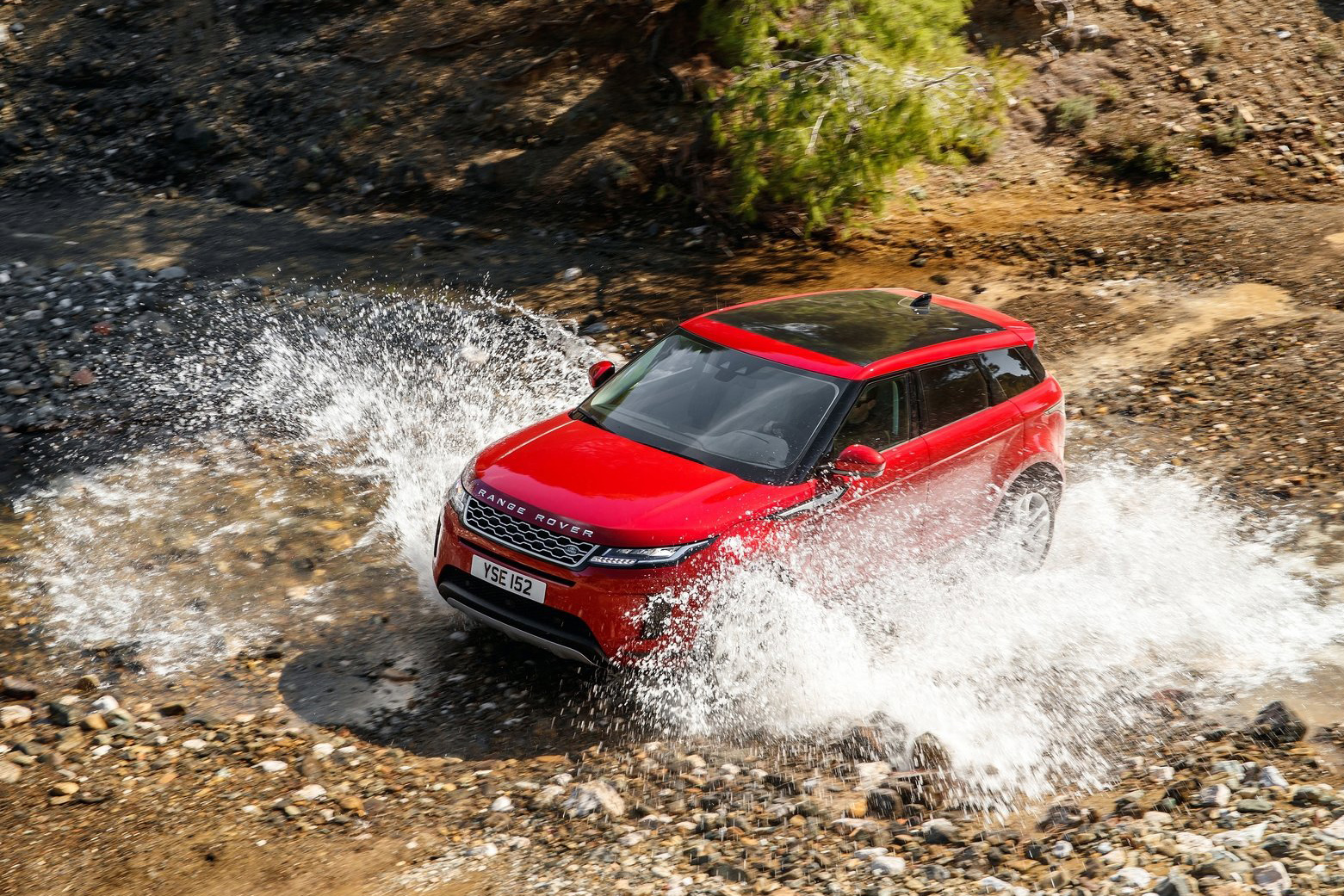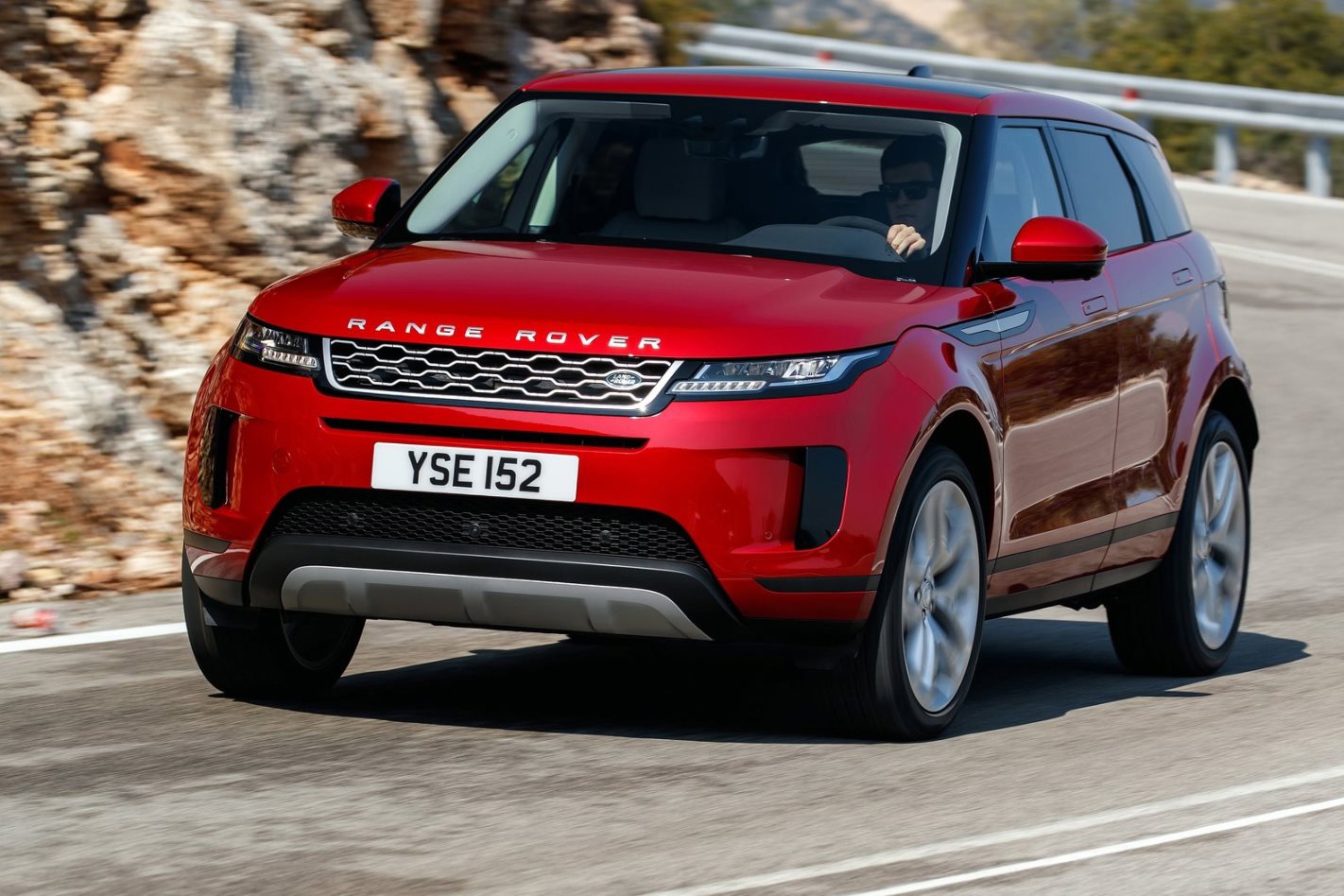Things we like
- Roomy for its size
- Syrupy drivetrain
- Great ride even on 21s
Not so much
- Best equipment costs extra
- Best-sellers miss the hybrid tech
The Wheels Verdict: The new Range Rover Evoque is an impressive leap forward and is now a real rival in all areas to the more popular Europeans.
WHAT IS THE RANGE ROVER EVOQUE?
The Evoque is the compact SUV baby of the Range Rover range, sitting below the Velar mid-sizer, the Sport and the just call me Range Rover big SUV. It was first launched in 2011, and came with all the prestige and off-road skills synonymous with the Range Rover label, but was held back by less refined Ford engines initially (they were replaced with new Ingenium engines in 2015), too-tight interior and fussy styling. Even so, Land Rover sold more than 800,000 Evoques worldwide in the nine years to now, one-third of Range Rover’s total sales.

This 2019 model is the second-generation Evoque. It’s a five-door only (no more three-door or convertible), and is priced from $62,670 in P200 S spec up to $96,090 for the D240 R-Dynamic HSE. That entry point is $4000 higher than last year, but Range Rover claims the new Evoque has more than enough new features and capabilities to make up the difference.
WHY WE’RE TESTING IT
Don’t be fooled by the similar skin; the all-new 2019 Evoque is an almost complete do-over. Engines are carried over from the outgoing 2018 model, but everything else is new (bar the door hinges). The 2019 Evoque is more refined, more capable, more spacious and has groundbreaking technology to boot. We’re keen to know if Range Rover’s baby has grown up enough to battle on even terms with more popular premium compact SUVs from Volvo, Audi, BMW and Mercedes-Benz.
RANGE ROVER EVOQUE REVIEW
There’s a lot to talk about with the second-generation Range Rover Evoque, launched in Greece last month. Plug-in hybrids, new driver-assist technologies, dynamic and practicality improvements, and more mature styling are the most obvious. But the biggest talking point could well be something we can’t see.
The 2019 Range Rover Evoque sits on an all-new platform – called ‘Premium Transverse Architecture’ by JLR – which will underpin the next Jaguar E-Pace and Land Rover Discovery Sport. And while this new platform is plug-in hybrid ready, it has not been developed for full electrification, surely a mandatory base to cover in this age. PTA has also resulted in a heavier car (up to 66kg on some models), despite being no bigger physically, and is going to have an unusually short lifespan.

“We’re hoping for eight to 10 years,” says Range Rover Evoque chief engineer Pete Simkin when we caught up at the global launch in the Hellenic Republic. “Beyond that, it’s just too hard to predict, what with all the revolutions going on.”
For a company like Jaguar Land Rover, which lost GBP3.4 billion in 2018 and is in the process of shedding 4500 jobs in the UK, the shortening lifespan (and lack of future-proofing) of platforms is an expense it would rather avoid. Or is Range Rover betting that mainstream electrification is still more than a decade in the future?
That question aside, if the new Range Rover Evoque’s real-world abilities are any indication, the next eight to 10 years will be good ones. Range Rover’s baby model has grown up; it has matured in all tangible areas and is now a well-rounded rival to the likes of Volvo XC60, BMW X3, Mercedes-Benz GLC and Audi Q5.
Australians will choose from 26 variants when sales commence in May, yet none of those will be three-door or convertible – both were dropped due to poor sales.

The new Evoque five-door’s styling is sympathetic to the 2011 original yet cleaner, less fussy. The trademark falling roofline, rising beltline and long wheelbase continue, but the adoption of the Velar’s front graphic, a more rounded rear (for aerodynamic reasons) and cleaner sides (including Range Rover’s hide-n-seek door handles) are genuine improvements.
The new Evoque is not much bigger externally than the old one; 1mm longer, 4mm wider and 11mm lower doesn’t help explain the increase in useable space inside. Clever design does. There’s now 2cm more rear legroom, the boot is 10 percent bigger, and there are more storage options throughout.
The cabin has also benefited from Velar hand-me-downs, most notably the new steering wheel with embedded thumbpad controls, 12.3inch fully digital instrument binnacle (standard on all but the base) and double-stacked multimedia screens. Thanks to the latter, there’s a definite reduction in buttons which contributes to the cabin’s calmer, more premium feel.
Motive duties still fall to two basic Ingenium engines: a turbocharged petrol and turbodiesel, both displacing two litres and paired exclusively with a nine-speed automatic transmission. Both engines come in three states of tune, ranging from 110kW/380Nm to 177kW/500Nm in the diesel and 147kW/320Nm to 221kW/400Nm in the petrol. Only the mid-spec 183kW/365Nm petrol and top-spec D240 diesel were available to test at the launch.

Both drivetrains are smooth and quiet and offer commendable performance in a compact premium SUV. But it’s the diesel that surprises the most. This engine has the mid-range you’d expect, but it’s the energetic acceleration off the mark, and responsiveness that really surprises. The reason: the D240 we drove, as per all diesel models, has Land Rover’s 48-Volt mild hybrid (MHEV) system, which captures braking energy in an 11.3kW/h lithium-ion battery and uses it via an 80kW electric motor at the rear axle to tangibly enhance initial acceleration, and also to add pep under full throttle.
Apart from the real-world driving improvements, Range Rover says this results in a six percent fuel saving.
Due to Australia’s poor fuel quality, Range Rover Australia has kept the mild-hybrid system off all petrol tunes bar the most expensive, which presumably is better able to accommodate the additional cost of a particulate filter into its retail price.
One model not available anywhere right now is a 1.5-litre turbo triple with plug-in capabilities due in 2020.
Dynamically, the Evoque takes another impressive step forward, even on monstrous 21-inch Pirelli Scorpion Zero tyres fitted to our test car in Greece. Add the Adaptive Dynamic suspension ($1950) and the Evoque’s quickish 2.3-turns lock-to-lock steering, and it’s an agile combo that controls the body admirably and rides with real comfort. At no time did we find ride lacking or wish for smaller boots with bigger sidewalls, not even offroad.

No surprises that the Evoque’s offroad capabilities leave its rivals in the dust, literally. Range Rover has invested heavily in finessing that aspect of the new Evoque – even though it’s an area few owners will actually explore, let alone experience to the full.
The Evoque’s Terrain Response and associated systems are now even more surefooted in tricky conditions, as we experienced on the launch. They’re also complemented by some new technologies like ClearSight Ground View which employs cameras mounted under the car (behind the front wheels) to project the road beneath onto the Evoque’s new centre console multimedia screen so you can see exactly where your wheels are. That’s great for offroad, but also a safety boon when avoiding kids toys, gutters and other dangerous obstacles.
Another technology first on Evoque is the ClearSight rearview mirror, which on first impression looks and acts just like a conventional mirror. Flick the dimmer switch, however, and it becomes a high definition TV screen broadcasting wider rearward vision from a camera mounted in the rooftop sharkfin. This means rear seat passengers or big luggage loads no longer compromise rearward vision.
All Evoque models are respectably well-equipped with dual zone climate control, leather trim, satnav, 10-way electric seats, active cruise, and other niceties. As usual with Land Rover and Range Rover models, the Evoque doesn’t mount a class-winning argument on value, especially because many of the new features are buried in the options list (digital IC, Adaptive suspension, ClearSight rear mirror, DAB radio, TouchPro Duo screens), particularly at the entry level. The Evoque represents great value if rugged off-roading is something you prize, but it’s midfield if we compare it purely for on-road capabilities, equipment and practicality.

RANGE ROVER EVOQUE VS RIVALS
Audi Q5, BMW X3, Mercedes-Benz GLC, Volvo XC60
RANGE ROVER EVOQUE PRICE AND SPECS AUSTRALIA
- Model: Range Rover Evoque D240 R-Dynamic HSE
- Engine: 2.0-litre turbocharged 4-cyl, MHEV
- Max power: 177kW @ 2400rpm
- Max torque: 500Nm @ 1500-2500rpm
- Transmission: 9-speed automatic
- Weight: 1955kg
- 0-100km/h: 7.7sec (claimed)
- Economy: 6.2L/100km
- Price: $96,090
- On sale: May 2019
Things we like
- Roomy for its size
- Syrupy drivetrain
- Great ride even on 21s
Not so much
- Best equipment costs extra
- Best-sellers miss the hybrid tech





